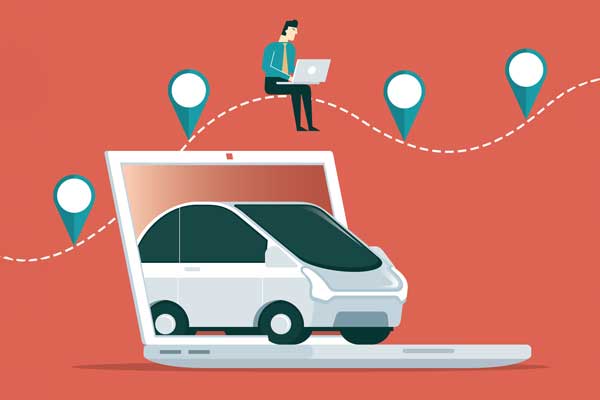From Bots to Buyers: How AI is Changing Dealerships

Article Highlights:
- Chatbots can understand and respond to customer queries.
- AI algorithms can identify distinct customer segments.
With worries that Artificial Intelligence (AI) will produce less skilled workers, create a depersonalized shopping experience, or even replace real-person workers entirely, AI in the workplace can be a tough sell. But, even if you’re not liking AI quite yet, your dealership’s customers seem to be liking how it transforms their shopping experience.
In today’s fast-paced digital era, the automotive industry is witnessing a paradigm shift in how businesses operate and engage with customers. The dawn of AI technologies—such as chatbots, task automation, and predictive analytics—has revolutionized how dealerships operate on a daily basis. By automating repetitive tasks and offering enhanced customer support, AI empowers dealerships to optimize their operations, focus on customer care, and ultimately boost sales.
Whether you’re a believer or a skeptic, we’re here to help you navigate the exciting landscape of Artificial Intelligence, and discover how it can help your dealership thrive in this new age of technology.
The Rise of Chatbots
If you’re wondering what exactly these little conversational robots are—and how they work—you’ve come to the right place. A chatbot uses those fancy-shmancy artificial intelligence techniques to understand and respond to users, with their main goal being to emulate natural human conversation. Essentially, they’re meant to make users feel like they’re talking to a real person (neat, huh?). Chatbots can be used for providing customer support, answering questions, assisting with tasks, or simply engaging in casual conversation. They can be found in messaging apps, websites, or dedicated platforms, and they aim to automate and streamline communication processes by providing quick responses to users’ queries or requests.
It’s clear that chatbots have emerged as a vital tool for automating and enhancing customer care (even in the automotive sector). These AI-powered virtual assistants enable dealerships to provide round-the-clock support, answer inquiries promptly, and offer personalized assistance. By leveraging natural language processing (NLP) capabilities, chatbots can understand and respond to customer queries, delivering a seamless online experience. Within a matter of seconds, chatbots can handle a wide range of inquiries, including vehicle information, pricing, availability, and financing options. By offering prompt responses and relevant information, chatbots enhance customer satisfaction, build trust, and ensure potential leads remain engaged and interested.
AI-powered chatbots also excel at lead generation and qualification. By automatically gathering customer information and preferences, chatbots can provide personalized recommendations, showcasing vehicles that align with the customer’s needs. These interactions help identify potential buyers and enable dealerships to focus their efforts on qualified leads only. By honing in on these profitable leads, you can increase conversions in an incredibly time-efficient way.
Quick Tip: To maximize the effectiveness of chatbots in your dealership’s advertising, we suggest using a chatbot that provides a personalized experience. You’ll want to use a chatbot that can incorporate the customer’s name into responses and remember the customer’s preferences and previous conversations. This way, when customers return, the chatbot can provide a more tailored experience and offer relevant recommendations based on their previous interactions.
The Efficiency of Task Automation
A revolutionary chatbot isn’t all that AI offers. Task automation in dealership operations helps reduce manual efforts, minimize errors, optimize resources, and enhance overall efficiency. By leveraging AI technologies to automate repetitive tasks, your dealership can improve productivity, streamline processes, and allocate more time and resources to what matters—customer care and satisfaction.
Task automations can be used to achieve a number of dealership goals:
- Inventory Management—AI technologies, such as machine learning algorithms, enable accurate demand forecasting, optimal pricing strategies, and efficient inventory management. By automating these processes, dealerships can ensure the right vehicles are available at the right time, reducing carrying costs and maximizing turns.
- Targeted Marketing Efforts—AI-powered systems can analyze customer data, preferences, and online behavior to create targeted advertising campaigns. By automating the process of identifying potential customers and tailoring ads accordingly, your dealership can optimize its advertising budget and reach the most relevant audiences.
- Inventory Advertising Integrations—Task automation can push your real-time inventory data into advertising platforms for quick and easy ad creation. This ensures that ads are displayed only for vehicles that are in stock and available for purchase. Automated systems can synchronize your inventory data with social platforms like Facebook. This kind of connection can trigger ads to pause or display based on changes in stock levels, effectively preventing wasted ad spend on vehicles that are temporarily unavailable.
Quick Tip: When implementing task automation in your dealership’s operations, it’s often best to start with small and repetitive tasks. Identify tasks that consume a significant amount of time but are relatively straightforward and repetitive in nature. These tasks could include data entry, report generation, or follow-up emails. By automating these tasks, your staff can save valuable time that can be redirected towards higher-value activities.
Remember, task automation is a journey, and it’s important to continuously evaluate and refine your automation strategy as you identify additional opportunities for optimization. By starting small and gradually expanding automation efforts, your dealership can unlock significant time and resource savings, ultimately improving overall efficiency and productivity.
The Power of Predictive Analytics
When powered by AI, predictive analytics hold an immense potential for transforming dealership operations. By leveraging historical data, market trends, and customer behavior patterns, predictive analytics algorithms can provide valuable insights and predictions that enable your dealership to make informed decisions based on accurate, actionable data. Incorporating predictive analytics into your dealership’s operations also allows you to stay ahead in a competitive market and effectively meet customer demands.
Predictive analytics can be used to achieve a number of dealership goals:
- Sales forecasting— By analyzing a variety of data sources, including customer demographics, past sales performance, economic indicators, and market trends, predictive analytics models can generate accurate sales projections for different vehicle models, regions, or time periods. This information enables your dealership to plan its inventory, marketing campaigns, and sales strategies more effectively, and it minimizes the risk of overstocking or missed sales opportunities.
- Optimal pricing strategies— Pricing vehicles competitively is crucial. Predictive analytics can analyze market conditions, competitor pricing, and customer preferences to recommend optimal pricing strategies. By understanding the relationship between price elasticity and demand, your dealership can determine the right pricing thresholds to maximize profitability while still remaining attractive to potential buyers. AI-powered pricing optimization systems can also continually monitor market dynamics to adjust prices competitively in real-time.
- Segmentation and targeting— By analyzing customer data and behavior patterns, AI algorithms can identify distinct customer segments based on their preferences, buying behaviors, and likelihood to make a purchase. This segmentation allows dealerships to create personalized marketing campaigns, tailored incentives, and offers that resonate with each segment. By targeting the right customers with the right messages, your dealership can significantly improve their marketing efficiency and drive higher conversion rates.
- Service maintenance and planning— Predictive analytics can analyze vehicle performance data, maintenance history, and other variables to predict when a vehicle might require service or maintenance. This helps your dealership schedule maintenance appointments in advance, improve customer service, and minimize unexpected breakdowns.
Quick Tip: When utilizing predictive analytics in your dealership operations, it’s important to remember that models require ongoing refinement and validation. Market conditions, customer preferences, and other factors can change over time, affecting the accuracy and effectiveness of predictive models. To ensure optimal performance, regularly evaluate and update your predictive models based on new data and insights.
Bonus Tip: You can validate the accuracy of your predictive models by comparing their predictions to actual outcomes. This can help identify any gaps or areas for improvement. If discrepancies arise, investigate the underlying factors and adjust your models accordingly. By refining and validating predictive models, you can ensure you are making data-driven decisions based on the most up-to-date and reliable information.
Artificial Intelligence has truly revolutionized the automotive advertising landscape by allowing dealerships to streamline operations, enhance customer experiences, and boost sales. By leveraging AI technologies and capabilities such as chatbots, task automation, and predictive analytics, your dealership can focus on providing exceptional customer care and cultivating long-term relationships with buyers. As this industry continues to evolve, the importance of having accurate, actionable data for your marketing efforts only continues to grow. Technology like AI can not only help you gather that data, but it can also put it to work for your dealership, ensuring that your customers receive a shopping experience more personalized than anything your competitors can offer.
Related Articles:

Harvesting Profits: Autumn Opportunities in Your Service Drive
As leaves begin to fall and jack-o’-lanterns light up porches, your service drive faces its own set of tricks and treats.

Maximizing Targeted SEO: Putting Consumer Needs in the Driver’s Seat
This article was written by Kenna Smith, a marketing communications intern. Today, SEO is more than a buzzword; it’s a game-changer. Businesses have been working…

Texting Tips: 5 Steps to Better Messaging
Fine tune your texting skills to send an impactful message every time.

Maximizing Your Marketing Potential with QR Codes
Nearly 89 million US smartphone users scanned a QR code with their mobile devices in 2022 – a number predicted to reach more than 100…















